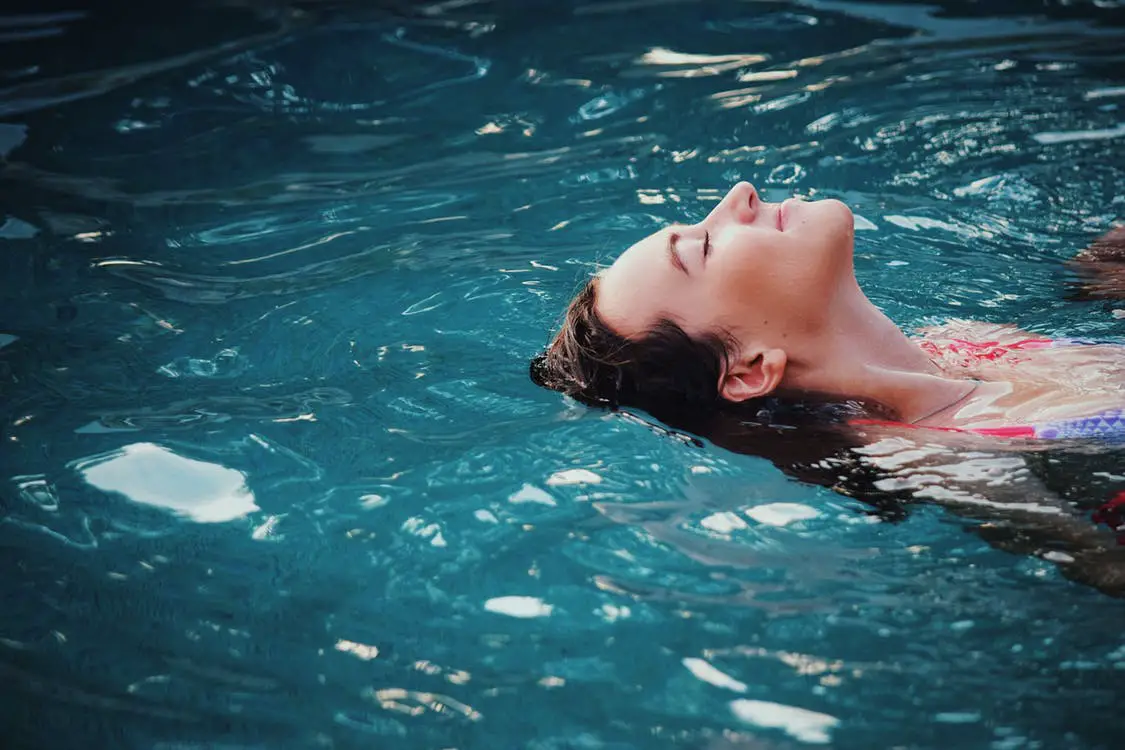![How To Deal With Sensory Overload [9 Tips For Overstimulation]](https://happyrubin.com/wp-content/uploads/2019/12/ik-ben-overprikkeld-150x150.jpg)
Best visualization exercises: Learn visualization skills

Thanks to the best exercises you will be prepared in this article to be able to perform a full visualization, in which you or your client will gain many insights. In visualizing you step out of the outer life, you take rest and you become a spectator of your life. In doing so, you become aware of what is present just below your waking consciousness. Read along…
Contents of this page:
Why should you visualize?
There are several uses for visualization. The main applications are:
- Connect with your subconscious! Thanks to the visualization guidance of the coach, the client can discover for himself what the subconscious wants to tell him / her. The coach does not fill in anything but only asks the client which message he / she perceives. The coach can also install healing words or encouragements himself.
- You can visualize your goals! We will go into this specifically at the end of this article.
A visualization can be a situation that the client has actually experienced or it can be a fantasy visualization. In any case, in this article you will learn how to perform a visualization on the basis of a number of exercises.
Exercise 1 – Be vague for more similarities between your descriptions and the client’s experience

In all cases, the client will (re) experience the situation in his / her own thoughts. This means that the coach must ‘match’ as many of the client’s observations as possible in his description of the visualization.
For example, when the client sees roses in a flower garden visualization while the coach is talking about glowing blue lavenders, something goes wrong in the credibility of the visualization.
So the coach should have been referring to ‘beautiful, fragrant flowers ‘, which is indeed much more vague (abstract) than blue lavenders . In addition, being abstract causes the client to enter a trance. Check how this was done correctly in the quotation below and where it could be improved.
“Imagine that you are on a beach. Look from left to right and see the beautiful sand bordering the gently undulating clear blue water. You see palm trees where the wind blows gently through. Hear the sound of the leaves of the palm tree. You hear the soothing sound of the waves. Look at the beautiful sky. Smell the sea water. Feel the sun burn on your skin. ”
Answer: This experience is described relatively vaguely. There are generalizations, omissions and distortions (these terms are explained in the NLP communication model ). That’s very positive when you work with other people, because the more specific you are, the more likely what you say will conflict with what they imagine. For example, it is not said:
- white sand (maybe they are on a volcanic black beach)
- clear blue sky (maybe there are some nice white clouds in her experience)
But it is thus said:
- beach
- beautiful sky
Now read the non-specific, so vague statements below, and come up with a number of your own.
- Hear the sound of the water
- Feel the temperature on your skin.
- Feel the temperature of your skin.
- Feel the wind on your skin.
- Feel where your feet touch the ground.
- Feel your heart beat.
Exercise 2 – Use the list ‘VAKOG’ as inspiration for visualizations

You can also take inspiration from the list ‘VAKOG (of the different representation systems)’ to describe things in the visualization. You can describe Visual, Auditory, Kinesthetic, Olfactory or Gustatory things.
Your task for this exercise is to ask someone to describe a pleasant memory of you. Use the following questions to get more information about that reminder:
- What else did you see?
- What else did you hear?
- What else did you feel?
- What else do you smoke?
- What else did you taste?
Also ask for details. So you can also ask, for example, what taste the food had, which makes it even more real for the person.
Then give back what you heard. The more vague the better. But you can also tell where you have more detailed information. Use the ‘VAKOG’ list again to get inspiration for things to mention. Example:
Visual
You saw the waves.
You may have seen other people.
You saw animals.
You saw the horizon.
You saw the sky.
Auditory
You may have heard some noises from other people.
You heard the sound of the water.
Kinesthetic
You felt where your body touched the dunes where you sat.
You could feel the presence of your father.
You felt the temperature on your skin.
You felt the wind on your skin.
You felt your heart beat.
All three (VAK) applied:
V – You see the stairs …
A – You hear your footsteps …
K – You feel your footsteps on the steps …
Exercise 3 – When visualization is difficult for your client
- “We start simple.
Describe your own home. What does the kitchen look like? And the sitting room? Where is the table? How many seats are there? In this visualization, walk to the bookshelf and take out a book, which book is it? ” - “Now we can already take it a step further.
Imagine visiting Hansel and Gretel. How many windows does Hans and Gretel’s house have, of which are the roof tiles made? Walk around it and notice what’s there. ”
Exercise 4 – A basic structure for visualizations

Lead your practice partner in a visualization, using the basic structure below.
Step 1 of the basic structure to visualize: entering the subconscious
A visualization is introduced with a visualization of an entrance to the subconscious. This can be done via a path, forest path, garden path, temple, house, clearing in the forest, walking down a stairwell or a long tunnel to a beautiful place with fountains and gardens to relax and discover. Then you can close the door behind you.
“Imagine that you are walking on a sandy path in a forest, and after a while you come to an old country house with many plants and old decorations in the garden.”
Step 2 of the basic structure to visualize: describe in a sensory rich way
During the exercises, use all your senses to experience the visualizations and learn from the themes. So describe observable things that can be seen, heard, felt, smelled and tasted. Make it alive , use your senses, and remember that the possibilities of imagining in your subconscious are endless.
“It is very quiet. Walk around the house. And notice everything you see. The glowing, radiant, colorful flowers in the garden, the lightly dilapidated garden gate, the windows of the house. Notice the scent surrounding the garden. Go inside and notice what objects there are, such as the paintings in the hallway. ”
Step 3 of the basic structure to visualize: the healing suggestion
The clue of the story is a message that the client can give their own interpretation to, or it is an encouragement from the coach. In the example below, the client is given complete freedom to discover his / her own messages.
This can be done, for example, through a meeting with a special person. You can describe this person vaguely so that the client can interpret it themselves, or you can use figurative archetypes. For example, a child figure represents the child in you.
The client can also find a message because the coach allows her to view images, for example in a mirror, film projector or in a painting. You can also let the client discover what kind of object her subconscious wants to show her, for example because the coach lets her open a box. First, make sure you indicate the meeting place.
“You see all kinds of doors that lead to rooms. You will soon meet special characters who will tell you important things. You see people that you did not expect to see there, and they are going to tell you something, they take you to another time and place, where you can learn from. Also pay attention to their clothes, eyes, what the eyes tell you, and feel the atmosphere.
In the first room you enter you see a child. Listen to what the child is saying to you. The child represents your open-mindedness. In the next room you see a wise woman. Listen to what she says. In the next room you see a wise man. Listen to what he says. In the next room you will receive a gift from a person of your everyday reality. What is it? In the basement you can see an antique mirror. This is where the precious from your past has been preserved, it is as if you are looking in a mirror of your life and you see different images from your life passing by. Then you see a box in the corner of the basement. Only you can open it. What’s in it? There is also a message in it. What’s the message? ”
Step 4 of the basic structure to visualize: leaving the subconscious
Finally, let the client walk back the same way to end the exercise.
A ‘light version’ for the above basic structure
Take a deep breath. Breathe to your heart. Focus on your heart. Imagine that you are allowed to speak to someone in your heart. For example your child, yourself or a mentor. Receive his / her message. Notice what it does to you.
Ultimately, you are supposed to improvise with visualisations

Ultimately, you build beautiful stories with your own visualisations! Take the visualization below as inspiration and example:
You are in a valley. You walk along a stream. It’s calming and it feels good. The stream flows into a lake. Calm and quiet. You see a cave. You enter and the cave entrance closes behind you. In the cave you see a large number of moving boxes ready. You put your problems in the moving boxes. Every moving box has a key. You lock them. Your key hanging around your neck …
A mysterious person appears and comes closer and closer to you like a hologram. He gives you a role with the important things in your journey. There is a pendant at the entrance of the cave. You still decide to hang the keys to the moving boxes on it, because you can let go. Still checking if they are safe, and they are.
Today you decide to climb a mountain. Without a backpack, food, drink, nothing. Trust only. And you see a path. A path means that someone has been there before, you know that intuitively and therefore you feel good and full of confidence inside. It is not a grassy path but it is full of trees, shrubs and plants. In the past there were clearly more people walking here. It gets steeper. You trip and hurt your knee. It stings. you wonder if it is still worth it to continue, looking at your red knee. You decide to continue and you don’t even feel your knee anymore.
You come to a viewpoint where you can see a lot, for example the valley where you were. It is still a long way to the top but there is no rule that you have to reach the top today. You will see a waterfall on your right. It’s cold water. You take the sand off your knee, and you make a cup of your hands and you drink and it tastes fantastic. Mountain water is really delicious. And you continue of course. Higher and higher …
(Finish the visualization yourself now!)
Tip: start the visualization by priming a preframe of ‘expectation and curiosity’
This can be done as follows:
“Something very important is about to happen. An important message has been waiting for you for a long time. Your subconscious has something to teach you. You are going to meet someone or something. Something or someone is waiting for you. You don’t know what yet. What you think it will be, it probably isn’t. Maybe you want to keep that message you are about to discover completely to yourself or maybe you want to share it with me. ”
Visual rehearsal: A simple, short visualization trick to perform better
Do you have two minutes before you can deliver a performance, such as presenting, training or a sporting performance? Almost every successful person, such as a successful basketball player, does a ‘visual rehearsal’ every time. He first makes a dissociated visualization of each shot, in which he sees himself, and then an associated visualization from his own eyes. The human brain cannot recognize the difference between a vivid visualization and a real memory, thus training you on the perfect shot.
Visualize your goals in 3 steps

Visualizing your goals is the same as a prayer, but very specific. It also ensures that your nervous system is ‘programmed’ in such a way that it can function optimally to achieve your goal.
Use the three steps below to visualize your goals. It works like a wish that will come true! A successful visualization depends on whether you can find a quiet place, clear your thoughts, and imagine your goals. Follow the next three easy steps to start visualizing.
Step 1 – Find a quiet place
The first step in learning to visualize is to find a quiet, quiet place. For example, you can choose the following:
- A nice and shady place in the park.
- Your favorite place in your house.
- Your own office.
- Wherever it is peaceful.
- Wherever you cannot be disturbed.
Step 2 – Clear your thoughts
To prepare yourself for visualizations, sit in a position where you can sit comfortably for a while.
- Close your eyes.
- Relax by taking a few deep breaths.
- Keep focusing on your breath.
- Count from 20 to 0 each time you exhale.
- Repeat this until your thoughts are empty.
Step 3 – Visualize your goals
Travel back in time to the future. Visualize all the details of the last day of your project. Visualize as much detail as possible !
- Visible things: what are you wearing that day, for example?
- Sounds: what do you hear?
- People: who are all there?
Then make it more attractive:
- Bring the image you see closer. Pull the statue towards you.
- Make it as bright, sharp, colorful and clear as possible.
- Make the sounds crystal clear.
If necessary, use other submodalities to enhance the visualization.
A nice video explanation about visualization and a bonus technique
Let’s start with the bonus technique. There is a powerful technique for ‘installing’ your goals into your timeline. This technique is called: ‘Create your own future’. You can find this technique at the bottom of the timeline article.
Write these things down and create a collage with your ideas. Finally, it is good to know that visualization is an important part of an NLP training .
Continue reading for more visualization tips
In this article about metaphors, you will find many more tips to make your visualizations even more powerful and magical. In that article, look mainly for the technique: ‘nested loops’.
How do you visualize success? And how often do you experience that visualization has become reality? For me it happens weekly. I’d like to hear it from you.

![5 Best Self Care Tips For College Students [#1 Advice]](https://happyrubin.com/wp-content/uploads/2021/09/the-best-self-care-tips-for-college-students-440x264.jpg)
![How To Stick To New Year’s Resolutions: 9 Tips [Smart & Sure Ways]](https://happyrubin.com/wp-content/uploads/2019/12/tips-voor-goede-voornemens-440x264.jpg)
![How To Stop Being So Hard On Yourself [9 Great Tips]](https://happyrubin.com/wp-content/uploads/2019/12/we-moeten-zoveel-van-onszelf-en-anderen-150x150.jpg)

![19 Best Ice Breaker & Get-To-Know-Eachother Games [Fun & Simple]](https://happyrubin.com/wp-content/uploads/2018/02/leukste-ijsbrekers.jpeg)
![Becoming More Social: 41 Tips [Improving Social Skills] [List]](https://happyrubin.com/wp-content/uploads/2018/06/sociale-vaardigheden1.jpeg)
![How to start a conversation with anyone: 15 tips [Making contact]](https://happyrubin.com/wp-content/uploads/2017/08/gesprekstechnieken1.jpeg)
![372 Friend Tag Q&A Questions [Best Friend Quiz]](https://happyrubin.com/wp-content/uploads/2019/05/best-friend-tag-vragen-voorbeelden.jpg)



![Clingy & controlling behavior of partner/date [Extreme examples]](https://happyrubin.com/wp-content/uploads/2020/06/claimerig-gedrag-van-partner-eigenschappen-en-voorbeelden-150x150.jpg)

![How to recognize if a man is in love [Signals & his body language]](https://happyrubin.com/wp-content/uploads/2020/05/verliefd-gedrag-van-mannen-herkennen-150x150.jpg)


![Free will and religion / theology [Verses & Quotes on free will]](https://happyrubin.com/wp-content/uploads/2020/10/religion-on-free-will-quotes-1050x640-1-150x150.jpg)

![Dealing With Setbacks & Hardship [Lessons & Examples]](https://happyrubin.com/wp-content/uploads/2018/11/omgaan-met-tegenslag-tips-hoe-dan.jpeg)
![NLP Agreement Frame: Use these exact sentences [Examples]](https://happyrubin.com/wp-content/uploads/2020/10/agreement-frame-nlp-1125x640-1-440x264.jpeg)
![122 Best Comebacks In Any Situation [Best Examples]](https://happyrubin.com/wp-content/uploads/2020/06/beste-comebacks-technieken-tips-440x264.jpg)
![Using Hypnosis to Stop Smoking [HowTo]](https://happyrubin.com/wp-content/uploads/2020/05/stoppen-met-roken-door-hypnose-150x150.jpg)
![Presuppositions language pattern: meaning & examples [NLP]](https://happyrubin.com/wp-content/uploads/2020/04/wat-zijn-vooronderstellingen-150x150.jpg)
![Peripheral Vision: Meaning & Exercise [Essential Skill]](https://happyrubin.com/wp-content/uploads/2020/04/perifeer-zicht-trainen-tips-150x150.jpg)

![How To Start A Coaching Business [21 Smart Tips]](https://happyrubin.com/wp-content/uploads/2018/11/coachingpraktijk-starten-tips.jpeg)
![How to make dreams come true? [33 tips to realize dreams 100%]](https://happyrubin.com/wp-content/uploads/2018/05/dromen-mijlpalen.jpeg)
![How To Become Rich? 27 Millionaire Tips [Guaranteed To Work]](https://happyrubin.com/wp-content/uploads/2018/01/hoe-kan-ik-rijk-worden.jpeg)
![77 Best Online Marketing Tools [Recommendations] [Also Free]](https://happyrubin.com/wp-content/uploads/2018/08/beste-onlne-marketing-tools-tips.jpeg)
![Complete List Of Virtues & Qualities [Including Explanation]](https://happyrubin.com/wp-content/uploads/2018/12/kernkwaliteiten-uitleg.jpeg)
![Being Attentive: How Do You Do That? [Meaning & 9 Tips]](https://happyrubin.com/wp-content/uploads/2019/05/attent-zijn.jpg)
![Being Conscientious: Meaning Of This Virtue [Explained]](https://happyrubin.com/wp-content/uploads/2018/07/Consciëntieus-persoon.jpg)


![Best Books About Burn-Out [Top 10] [Update 2025]](https://happyrubin.com/wp-content/uploads/2020/06/beste-boeken-over-burnout-lijst-440x264.jpg)
![Best Self-love Books [Top 10] [Update 2025]](https://happyrubin.com/wp-content/uploads/2020/04/beste-boeken-over-zelfliefde-aanraders-440x264.jpg)
![Life changing books: 10 books that change your life [2025 Update]](https://happyrubin.com/wp-content/uploads/2020/03/levensveranderende-boeken-tips-150x150.jpg)
![Top 10 Best Books: Recommendations Per Genre [2025 Update]](https://happyrubin.com/wp-content/uploads/2019/12/best-books-per-genre-150x150.png)
![Best Books On procrastination: Must Reads [List] [2025 Update]](https://happyrubin.com/wp-content/uploads/2019/11/beste-boeken-over-uitstelgedrag-tips-150x150.jpg)
![Joe Dispenza: Events To Attend [2025 & 2026] [All Info]](https://happyrubin.com/wp-content/uploads/2020/02/joe-dispenxa-events-440x264.png)
![Best Online Study Options [Online Education Top List]](https://happyrubin.com/wp-content/uploads/2019/03/best-home-study-options-440x264.png)
![Teachable Review & Experiences 2025 [Bad Online Training Tool?]](https://happyrubin.com/wp-content/uploads/2020/02/Teachable-review-ervaringen-150x150.png)
![Audible Review, Experiences & Special Discount [Scam?]](https://happyrubin.com/wp-content/uploads/2020/01/audible-review-ervaringen-150x150.png)
![Guest Posts Wanted [Free & Always Directly Accepted]](https://happyrubin.com/wp-content/uploads/2019/05/gastbloggen-regels.jpg)
